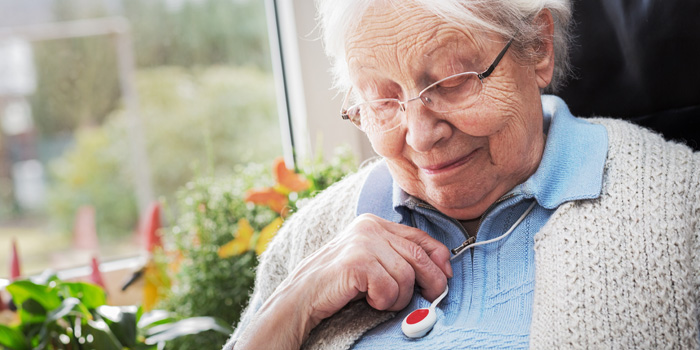Technology has come a long way toward providing systems that allow seniors to age in place securely. Perhaps there is no one in the English-speaking world that does not immediately recognize the TV-made-famous line, “Help! I’ve fallen and I can’t get up.” And, while we smile at the memories, it is really not funny at all.
In fact, falling is the number one reason for an Emergency Room visit for people over 65 – by far – with 645 ER visits per 10,000 seniors. (As a shocking frame of reference, automobile accidents are second with 35 ER visits per 10,000 – making falling 18 time more likely the reason for an ER visit). In fact, every 19 minutes, someone over 65 sustains a fall-related injury that ultimately causes his or her death. It makes falling the leading cause of fatal injuries for those 65+.
Given the ramifications of older people falling, it can be extremely beneficial to have a personal emergency response system (PERS) if an older person finds him or herself in this type of situation and in need of medical assistance. Also known as Medical Emergency Response Systems, they allow the wearer to call for help in an emergency by simply pushing a single button. Each system is a little different, but most offer easy-to-use wearable devices that require nothing more than the push of a button to connect with an emergency response representative. They are worn around the neck as a lanyard or necklace or on the wrist like a watch. Then in the case of a fall or where movement is otherwise limited, this enables the older person to get help without having to try to crawl or otherwise find his or her way to a phone.
A PERS generally has three components: a small radio transmitter, a console connected to your landline telephone, and an emergency response center that monitors calls.
What’s more, with significant advancements made in mobile technology, these personal response systems can send an alert from anywhere. This provides a greater level of independence and assurance during vacations, while running errands, or otherwise outside the primary residence. When a senior can still do many things on his or her own, using a personal emergency response system can provide some comfort that help is quickly available if needed, while still fostering a level of independence.
Why not just use a cell phone? One could argue that cell phones offer these same types of protections, making them just as easy to use as personal emergency response systems without the added costs. However, there are a few issues with relying on a cellular device in an emergency medical situation.
First, if you call 911 from a mobile phone, the first responders will not necessarily be able to tell who you are or where you are. Your phone number will appear and sometimes your name. Though they may be able to tell which cell tower your phone is using to communicate with them, it will not provide your exact location. Even if your phone has GPS, determining your precise location is not reliable enough to entrust your life. In addition, if the phone’s buttons are small or difficult to push, they may not be easily accessible in an emergency, especially for hands that are unstable or if eyesight is poor.
According to the National Council on Aging, three out of four elderly persons have every intention of staying in their current homes for as long as they live. So, one way for everyone to have peace of mind in this type of situation is to use the services of an emergency response system.

